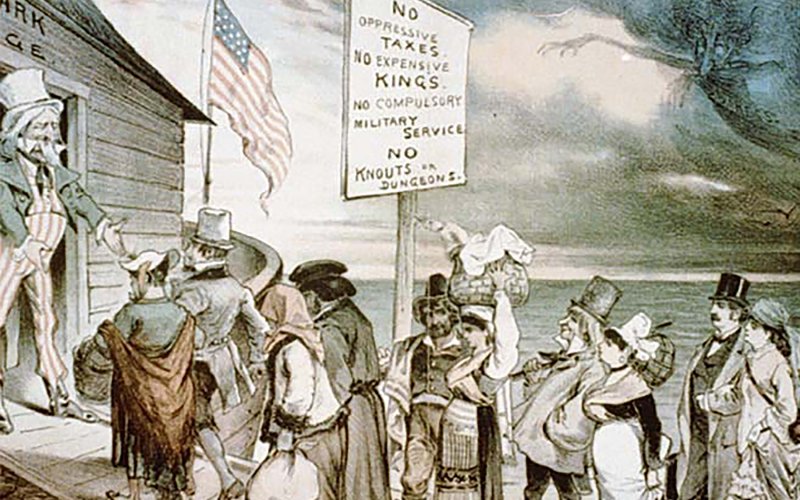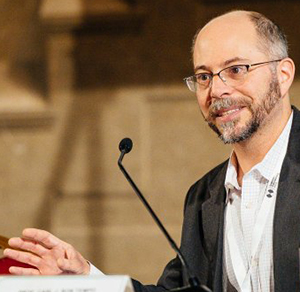UAlbany Professor Authors Immigration: An American History

ALBANY, N.Y. (July 28, 2022) — From the Colonial period to the present, the history of the United States has been shaped by immigration. A new book from UAlbany Associate Professor of History Carl Bon Tempo examines the central role of immigration in the formation and evolution of the U.S.
Co-authored by New York University Paul And Sylvia Steinberg Professor of American Jewish History Hasia R. Diner, Immigration: An American History takes a global approach in the exploration of the contexts and motivations for migration to the United States. “In the book, we look at who immigrated to the United States, how and why they came, and the ways in which these various newcomers reshaped the United States,” Bon Tempo explained.
The book begins by reviewing the era of the founding immigrants in the 17th and 18th centuries, with insight into the difficult journey the first settlers to Britain’s 13 colonies endured, from overcrowded conditions on boats rife with scurvy and dysentery, to storms at sea and high levels of mortality on the eight- to 12-week voyages.
“And yet, these early immigrants to the United States repeatedly expressed burgeoning hope in the new world, excited by new economic opportunities, the opportunity to escape political or social discontent at home and the chance to reunite with family or friends,” Bon Tempo said.

Those, even to the present day, who followed these early immigrants to the United States came from similar reasons and with equal hopes, Bon Tempo and Diner show. But while immigrants from northwestern Europe dominated in the Colonial period and the early republic, this did not last. In the second half of the 19th century, the United States began attracting immigrants from Asia and south, central and eastern Europe. During the 20th century, newcomers from Mexico and the Caribbean shaped immigration to the U.S.
“The diversity of newcomers through American history was remarkable, and even the earliest Americans noted it,” said Bon Tempo.
As described in the book, in the Colonial era, a French-born farmer turned New York land surveyor described a “family whose grandfather was an Englishman, whose wife was Dutch, whose son married a French woman and whose present four sons have now four wives of different nations.” Such a mosaic would, of course, be familiar to Americans living in the 21st century.
Bon Tempo and Diner make clear, though, that in addition to this tradition of welcoming newcomers, there exists in U.S. history an equally powerful tradition of viewing them skeptically or opposing their arrival.
No less a figure than Benjamin Franklin in 1751 decried the arrival of German immigrants in Pennsylvania, describing them as “swarthy” and “Palatine boors.” In the 1840s and 1850s, a new political party, the Know Nothings, emerged as a vehicle for nativism. In the 20th century, immigration opponents turned their ire against Jewish refugees and Mexican workers, to name two groups. Thus, the anti-immigrant sentiments in contemporary America are nothing new, Bon Tempo and Diner show.
This anti-immigrant culture had an important effect, Bon Tempo and Diner argue. It led to the empowerment of the federal government to regulate immigration to the United States. Prior to the 1870s, state and local governments had some tools to restrict immigration, but they often proved ineffective. But convinced that Chinese immigrants represented a threat, the federal government stepped up border protection in the late 19th century.
As the 20th century evolved, an increasingly militarized border targeted immigrants from Mexico and, then, Central America. Bon Tempo and Diner’s point is clear: The building of walls to keep out certain newcomers, as seen during the Trump presidency, has long historical roots.
Bon Tempo and Diner close, though, with a note of optimism. Immigrants “helped create the United States in all its beautiful, inspiring, and terrible complexity. Grappling with that past and present, we believe can light a better and more honest way to the future.”




